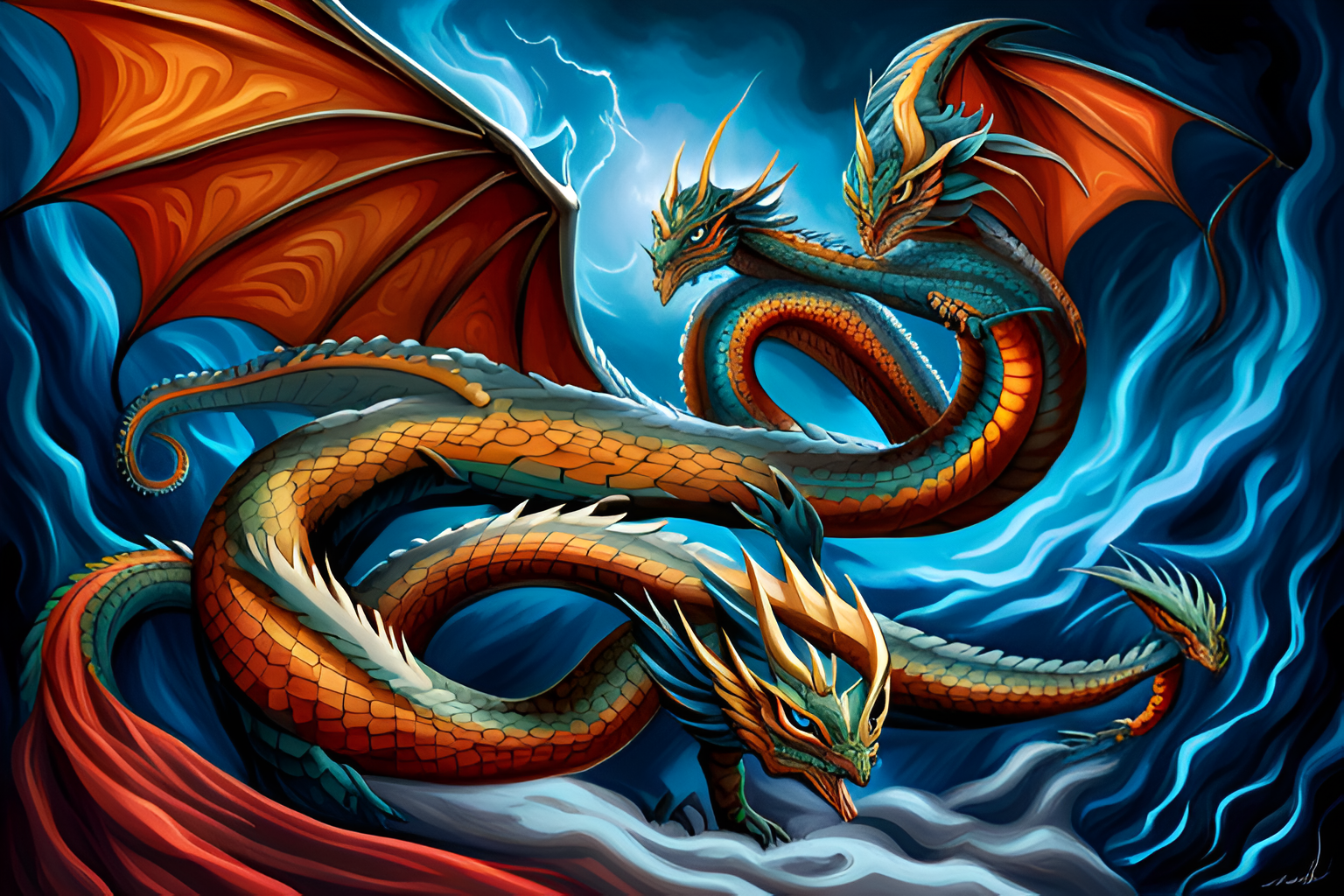Mythical animals like dragons, hydras, and wyverns are held in high regard due to their recognizable heads and necks, strong wings, and large wingspans. These animals are famous for their capacity to fly; they soar through the air on gigantic wings that are covered in leathery membranes. These types of bat-type wings enable these mythical animals to soar through the air at incredible speeds. The majority of their bodies and limbs are often elongated and serpentine, and their sturdy frames are covered with scales. Dragons have four strong limbs making them quadrupeds, each of which is armed with a sharp claw that is capable of gripping and ripping with an immense amount of force. Their hind legs are strong, which enables them to make quick movements and leaps with dexterity.
Hydras are legendary serpentine animals that have the ability to regenerate themselves. Hydras are both fascinating and terrifying. They have many heads, scales, and skin, and each head is autonomous and capable of operating on its own. They also have several sets of scales. Hydras, on the other hand, do not have wings and instead rely on the flexibility of their serpentine bodies to enable them to move quickly both on land and in water. As a result of their remarkable capacity for regeneration, hydras have been said to be nearly immortal. This enables them to recover from wounds that would be lethal to other kinds of animals.
Wyverns, who are frequently portrayed as dragon-like animals that walk on two legs and have wings, have a distinctive physical makeup that differentiates them from other mythological entities. They have a ferocious appearance with jaws that resemble those of a dragon, complete with sharp fangs and a terrifying head shape. The sleek bodies of wyverns and the tremendous wingbeats of wyverns make them deadly adversaries for any airborne prey.
In many different countries, these mythical beasts represent important things. For example, dragons are frequently connected with power, knowledge, and protection; hydras are associated with regeneration and immortality; and wyverns are seen as emblems of strength and domination. Although there is no living species that can be considered an exact clone of a dragon, hydra, or wyvern, there are several animals that share specific qualities or physical characteristics with these legendary beasts.
Dragons are respected as strong and good-natured entities in China’s mythology, where they occupy a large location and play an important role. Dragon lore may be traced back to Celtic, Norse, and Slavic civilizations in Europe, all of which have made significant contributions to the lasting presence of dragons in Western mythology. Wyverns, which are quite similar to dragons, first appeared in medieval Europe. These animals were shown as having two legs and two wings, similar to dragons. Wyverns are sometimes referred to as “dragons,” however typical dragons are not the same as them in appearance, behavior, or symbolism. Wyverns have their own unique qualities, legend, and symbolism.
In conclusion, throughout the course of history, people have been interested and intrigued by the anatomy of mythological monsters such as dragons, hydras, and wyverns. People have been enthralled and motivated over the course of history by these mythological animals because of their eternal fascination and the different ways in which they have been portrayed. Both the Hydra and the Wyvern have their origins in Greek mythology. In Greek mythology, the Hydra, a serpent-like creature with multiple heads, plays a significant role in the Hercules narrative. Wyverns also have their origins in Greek mythology. These legendary beasts have a long and illustrious history that dates back to ancient civilizations; nevertheless, wyverns and hydras did not come into being until much later within certain mythological and cultural settings. Dragons had a role in the mythology of ancient Mesopotamian civilizations such as the Sumerians and the Babylonians. Dragons were the subject of stories and pictures from these countries.

